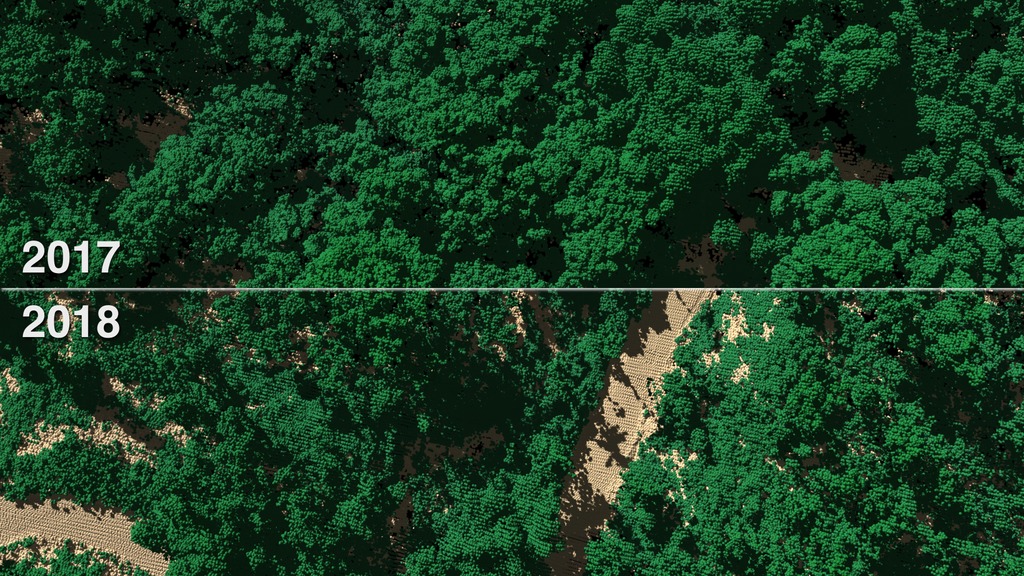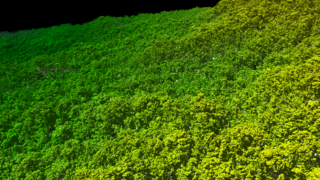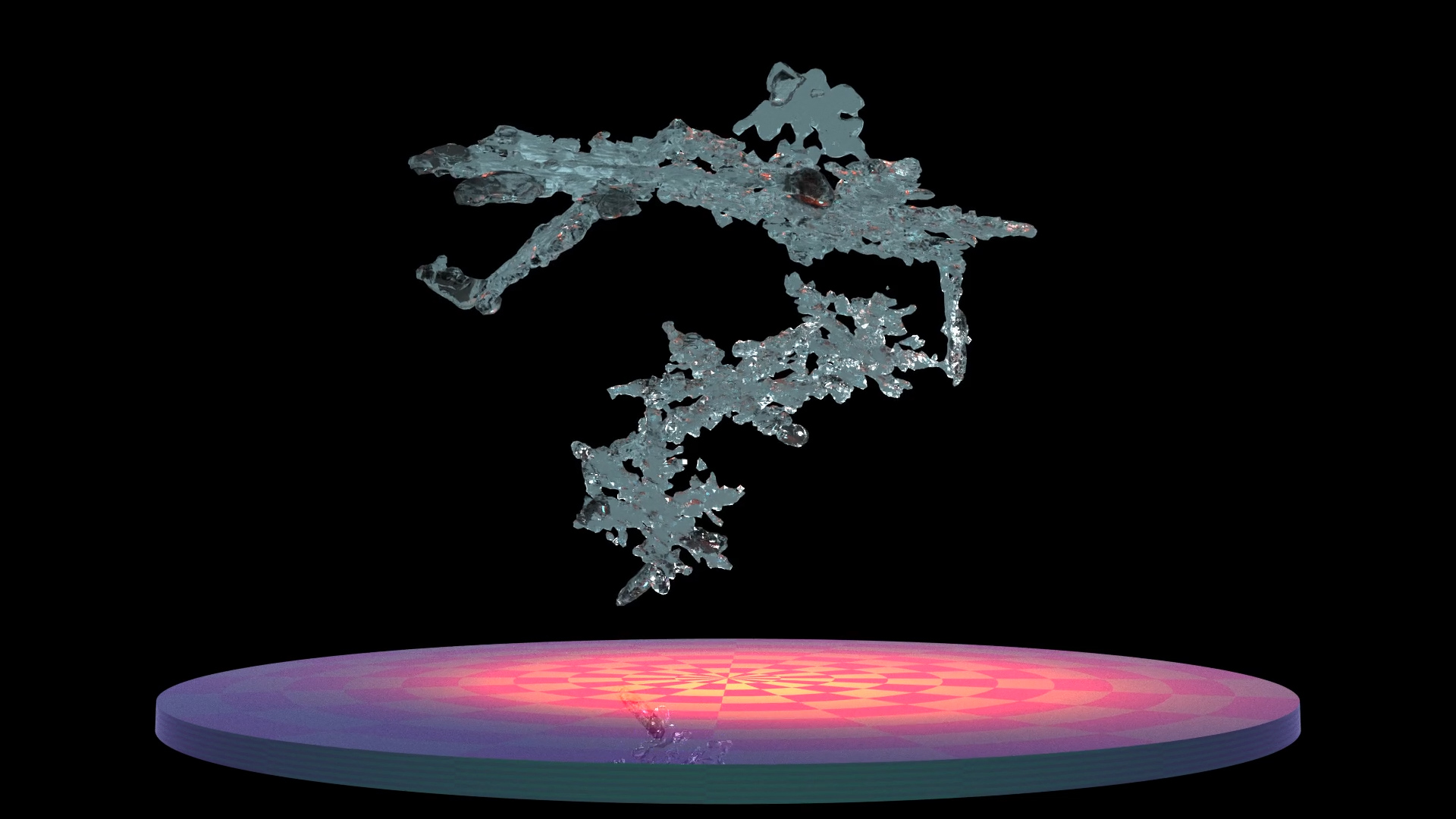El Yunque National Forest, Puerto Rico Canopy Change from Afar (2017-2018)
Sample Composite that split screens the lidar swath over the El Yunque National Forest, Puerto Rico. During the split screen, 2017 data is on the upper left and 2018 data on the bottom right. As the camera moves northwest, the viewer can see patches of ground becoming visible in the 2018 data. This is due to the vast numbers of trees that were stripped or fell during Hurricane Maria in September 2017.
In September 2017, Hurricane Maria's lashing rain and winds also transformed Puerto Rico's lush tropical rainforest landscape. Research scientist Doug Morton of Goddard was part of the team of NASA researchers who had surveyed Puerto Rico's forests six months before the storm. The team used Goddard’s Lidar, Hyperspectral, and Thermal (G-LiHT) Airborne Imager, a system designed to study the structure and species composition of forests. Shooting 600,000 laser pulses per second, G-LiHT produces a 3D view of the forest structure in high resolution, showing individual trees in high detail from the ground to treetop. In April 2018 (post-Maria) the team went back and surveyed the same tracks as in 2017 (before Maria).
The extensive damage to Puerto Rico's forests had far-reaching effects, Morton said. Fallen trees that no longer stabilize soil on slopes with their roots as well as downed branches can contribute to landslides and debris flows, increased erosion, and poor water quality in streams and rivers where sediments build up.
2017 El Yunque National Forest, Puerto Rico six months before Maria.
2018 El Yunque National Forest, Puerto Rico after Maria hit in late 2017.
Credits
Please give credit for this item to:
NASA's Scientific Visualization Studio
-
Data visualizers
-
Alex Kekesi
(Global Science and Technology, Inc.)
-
Greg Shirah
(NASA/GSFC)
- Horace Mitchell (NASA/GSFC)
-
Cindy Starr
(Global Science and Technology, Inc.)
-
Alex Kekesi
(Global Science and Technology, Inc.)
-
Producer
- Matthew R. Radcliff (USRA)
-
Writer
- Ellen T. Gray (ADNET Systems, Inc.)
-
Scientist
-
Doug C. Morton
(NASA/GSFC)
-
Doug C. Morton
(NASA/GSFC)
-
Data provider
- Hyeungu Choi (Global Science and Technology, Inc.)
-
Technical support
- Laurence Schuler (ADNET Systems, Inc.)
- Ian Jones (ADNET Systems, Inc.)
Series
This page can be found in the following series:Datasets used
-
LiDAR (LiDAR 3D point cloud) [Airplane: G-LiHT]
ID: 965
Note: While we identify the data sets used on this page, we do not store any further details, nor the data sets themselves on our site.
Release date
This page was originally published on Monday, December 10, 2018.
This page was last updated on Monday, January 6, 2025 at 12:12 AM EST.


